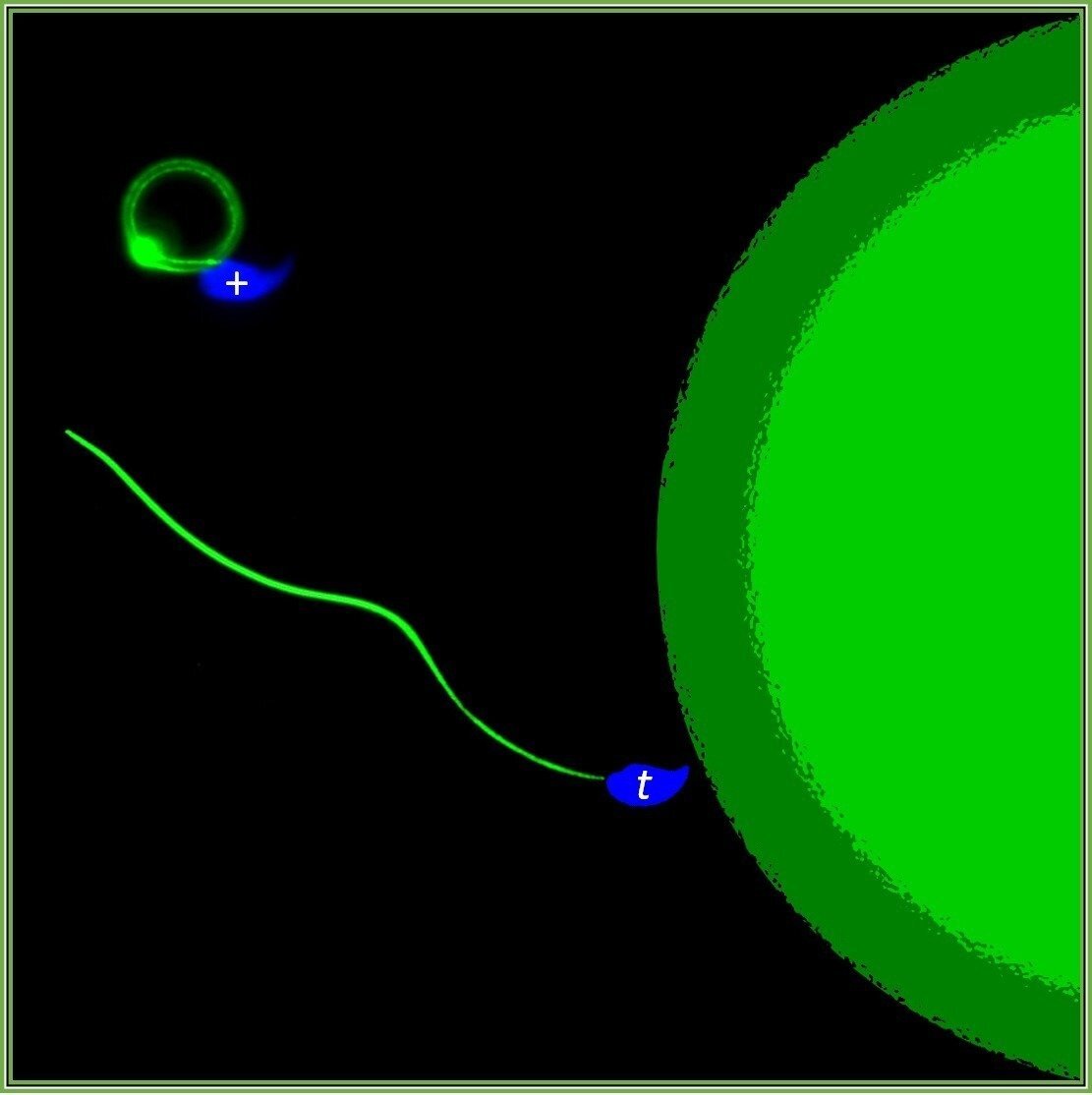The competition between sperm is fierce - they all strive to be the first to reach the egg in order to
A group of researchers from the Institute of MolecularMax Planck Genetics in Berlin (MPIMG) describes how a genetic factor such as the t-haplotype contributes to the success of sperm in fertilizing an egg.
Researchers have shown for the first time experimentallythat sperm with a t-haplotype are more progressive. They move forward faster than their "normal" peers. Biologists analyzed individual spermatozoa and found that most of the cells that advanced only marginally on their path were genetically "normal", while straight-moving sperm mostly contained the t-haplotype.
“Sperm with the t-haplotype can be removed frombuilding sperm without it,” explains Bernhard Herrmann, director of MPIMG and author of the study. — The trick is that the t-haplotype “poisons” all sperm, but at the same time produces an antidote that acts only on t-sperm and protects them. Imagine a marathon in which all participants receive poisoned drinking water, but some runners also take the antidote.”
 In direct competition, t-spermatozoa wintheir usual peers (+) in the race for the egg with genetic tricks, allowing them to swim in circles. Credit: MPI f. Molecular Genetics / Alexandra Amaral
In direct competition, t-spermatozoa wintheir usual peers (+) in the race for the egg with genetic tricks, allowing them to swim in circles. Credit: MPI f. Molecular Genetics / Alexandra Amaral
As scientists have found out, the t-haplotype containscertain gene variants that distort regulatory signals. These factors are established at an early stage of spermatogenesis and are distributed to all spermatozoa of mice carrying the t-haplotype. They are the "poison" that interferes with forward movement. Thus, the sperm cells poison their competitors in the fight for fertilization.
The “antidote” comes into effect afterhow the set of chromosomes is evenly distributed between sperm during their maturation. Only half of the sperm with the t-haplotype produces an additional factor that reverses the negative influence of the distorting factors. And this protective factor is not distributed, but is stored in the sperm.
“Our data underscores the fact that sperm are ruthless competitors,” concludes the study's author.
Read more
Look at an 8 trillion pixel image of Mars
Abortion and science: what will happen to the children who will give birth
Scientists explain why the wolfia plant is the fastest growing
MPIMG - Max-Planck-Institut für molekulare Genetik, Max Planck Institute for Molecular Genetics.
Haplotype (abbr.from "haploid genotype") - a set of alleles at the loci of the same chromosome, usually inherited together. If the combination of alleles changes during crossing over (which happens very rarely), they speak of the emergence of a new haplotype. A haplotype can be at one locus or in the whole genome. The genotype of certain genes of a diploid individual consists of two haplotypes located on two chromosomes obtained from the mother and father, respectively